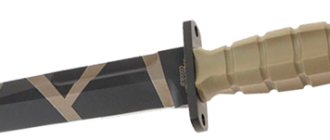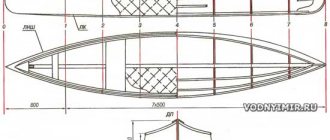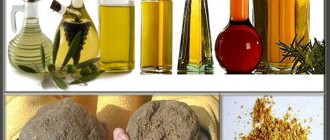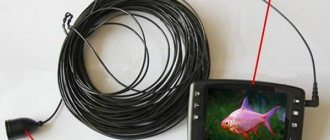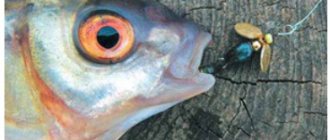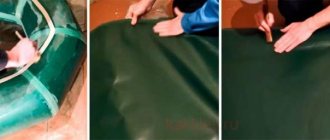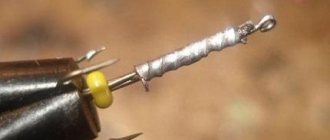Periodization of Japanese art
Like nowhere else in the world, in Japan the history of art is closely connected with history, more precisely, with the history of the ruling dynasties. The main periods of development of Japanese painting:
- Yamato (VI – VII century);
- Nara (mid 7th – 8th century);
- Heian (late 8th – 12th centuries);
- Kamakura (late 12th – first half of the 14th century);
- Muromachi (first half of the 14th – first half of the 16th century);
- Azuchi-Momoyama (second half of the 16th century);
- Edo (XVII – XIX centuries);
- Meiji (late 19th – early 20th century);
- modern Japanese painting.
Each of the periods differs in the way of artistic expression of the world, the manner of painting, but the predominance of landscapes remains unchanged: this is a cross-cutting motif of Japanese art. Every artist in this country, from ancient to modern, is filled with deep reverence for nature as an eternal source of life.
The most interesting artistic periods are the Yamato, Muromachi and Momoyama periods.
Patchwork painting using the Kinusaiga technique
The Japanese are very practical people. That is why they cut old kimonos that are not suitable for further wear into small pieces and create wonderful patchwork paintings.
To create a masterpiece with your own hands, you will need the following:
- A sheet of thick cardboard;
- A thin sheet of foam plastic (a square of ceiling tiles will do);
- Pieces of fabric of the same thickness;
- Sintepon or cotton wool;
- Glue stick;
- Toothpick or thin knitting needle;
- Sewing supplies - thread, needle, tailor's pins, scissors;
- Paints (acrylic is best).
Stages of work:
- The easiest way is to purchase a ready-made template at a craft store. It's already outlined exactly how to cut it. The set includes two identical drawings. Otherwise you will have to create it yourself.
- Transfer the drawing to tracing paper and cut into fragments. To avoid confusion, number each piece.
- Cut out pieces from fabric of a suitable color. Add at least 2mm seam allowance on all sides.
- Stick the foam onto the cardboard. Glue the second copy of the template onto it and cut the contour lines with a sharp knife. The grooves should be approximately the same depth as the fabric allowance.
- Coat the edges of the grooves with glue. Using a toothpick or needle, carefully tuck each piece into place. Leave a small hole to fill with cotton wool or padding polyester.
- Paint small details. You can also use thin cords for finishing. The Japanese painting is ready.
Sumi-e
This technique of drawing with ink on rice paper , brought in the 13th century by Chinese monks, is also called suiboku, suibokuga. Japanese artists have brought it to perfection : monochrome landscapes seem to be painted in watercolors. Typical sumi-e subjects are mountains and ponds.
The brightest representatives of the direction:
- Josetsu . A monk considered the founder of sumi-e. The most famous work is “Catching Fish with a Pumpkin”.
- Toyo Sesshu . His works are the standard of this technique, a striking example of which is “Landscape in the Haboku Style.”
- Sasson . He is interesting not only for his creativity, but also for his origin: he was a samurai. His landscapes often feature animals, as in the painting “Monkeys on Rocks and Trees.”
- Hosegawa Tohaku . Thanks to him, the sumi-e style gained extraordinary popularity. One of the peaks of his work is “Pines”.
The simplest option
For those who have a minimum of time and cannot boast of drawing abilities, there is the following option for a do-it-yourself painting.
Draw a tree branch using thick black gouache or ink on a sheet of thick cardboard. Then, in several saucers or disposable plastic bowls, mix red and white paint in different proportions to create different shades of pink. Colors should not be too bright. Alternately, dip a sponge or piece of sponge into each saucer and make imprints on the cardboard, depicting sakura flowers.
Wait until the previous one is completely dry before applying the next coat.
Ukiyo-e
This is the name given to woodblock prints that are characteristic of Japanese urban art. Their content echoed the themes of urban literature. The artists' focus is on people : geishas, kabuki performers, sumo wrestlers. Landscapes in ukiyo-e appeared much later. This type of woodcut reached its peak in the 17th century, and in the 18th century the technique of color printing .
The manner of execution of paintings
Unlike Europe, Japanese artists preferred to paint closer to graphics than to painting. In such paintings you will not find the rough, careless oil strokes that are so characteristic of the Impressionists. What is the graphic nature of such art as Japanese painting? Flowers, trees, rocks, animals and birds - everything in these paintings is drawn as clearly as possible, with firm and confident ink lines. All objects in the composition must have an outline. Filling inside the outline is usually done with watercolors. The color is washed out, other shades are added, and somewhere the color of the paper is left. Decorativeness is precisely what distinguishes Japanese paintings from the art of the whole world.
Kano Art School
Her influence goes far beyond Muromachi: for 300 years , the Kano family reigned almost unchallenged in Japanese painting. This was greatly facilitated by the support of the shogunate, whose official artists were representatives of the school, starting with the founder, Kano Masanobu (1434–1530). He developed his own original style, taking suibokuga as a basis and adding light illumination with mineral paints.
The creator of Kano’s signature style was Masanobu’s son, Motonobu (1476–1559). He combined writing with ink and the use of paints, but most importantly, the national tradition of Yamato-e was developed in his work. Motonobu also turned out to be a successful entrepreneur: he opened a network of art studios, which grew year by year.
Monotobu's grandson, Eitoku (1543–1590), can perhaps be considered the best master of the Kano school. Screens - an integral element of Japanese interiors - in his design became a symbol of Momoyama's exquisite luxury and a picturesque standard for years to come. The complex landscape, carefully painted on a golden background, is full of many subtle details that elude a quick glance, but bewitching upon closer examination.
The last outstanding representative of Kano was Sansetsu (1589–1651), who worked already in the Edo period, when strict simplicity became fashionable. And although he still worked with gold paintings, it was his ink paintings that brought him fame.
The Kano school is an integral phenomenon , despite the huge number of artists belonging to it. The subject matter of the paintings covers all traditional motifs - landscapes, animals, everyday scenes. The monochrome paintings on silk made by Kano masters are excellent, which are characterized by a combination of a realistic foreground and an abstract background: it depicts clouds, waves, and fog.
In the 19th century, when Japan was no longer introverted and hidden from the world, it was for some time under strong European influence . In art, this was manifested by the competition between traditional and Western styles. But this struggle died out quite quickly, and classical Japanese painting again took a central place in the country's culture.
Kakejiku - a Japanese take on painting
Today I wanted to introduce you to an unusual, not typical for us Europeans, Japanese perception of the concept of painting. After reading this publication, you will see the ideological difference between us and them in relation to the picture, and perhaps you will even be a little perplexed. But I think you will undoubtedly be interested to know what 100 paintings mean for a European and the same 100 paintings for a Japanese. So, let's begin!
There is an interesting form of painting in Japan called kakejiku. Kakejiku is a Japanese hanging scroll. A work of painting or calligraphy that is usually mounted with edges of silk fabric on flexible supports. Kakejiku can be rolled up for storage. Compared to a makimono, which must be unfolded horizontally and preferably on a flat surface, kakejiku is intended to be hung on a wall as part of a room's interior decoration. It is traditionally displayed in the alcove of a "tokonoma" room, which is specially designed to display valuable items. It can also be hung in the most important room of the house where the tea ceremony or other traditional events are held. Kakejiku is also often hung in martial arts rooms called "doujou" (training rooms). Next to the kakejiku are often other objects ("okimono"), such as swords ("katana"), dolls, "bonsai" or flower arrangements ("ikebana"). An essential aspect of kakejiku is that it is not intended to be hung permanently, making it versatile in its placement.
"Kakejiku" (hanging scroll) was introduced to Japan during the Heian period (794-1185), mainly to display Buddhist images for religious worship, or as a way to display calligraphy or poetry."
The original architecture of Japanese housing has developed significantly since the time of Muromachi (1336-1573). In this architectural style, a Japanese-style room (called "washitsu") has become a tatami-floored room and contains one special space called a "tokonoma" alcove. The most important feature of tokonoma is the display of kakejiku. Tokonoma was seen as a space connecting art and everyday life, so landscapes, paintings of flowers and birds, portraits and poetry became favorite themes.
The Momoyama period (1573-1600) saw the introduction of two great sovereigns: Nobunaga Oda and Hideyoshi Toyotomi. They were very fond of “chanoyu” (tea ceremonies). Tea ceremonies were usually held in the tokonoma alcove room. During this period, the Tokonoma architectural style was developed and created. Along with the development of the tokonoma style, painting and installation techniques were also developed because kakejiku was always displayed in tokonoma. Additionally, when Sen no Rikyu mentioned the importance of kakejiku, kakejiku became extremely popular among people who were fascinated by tea ceremonies.
During the Edo period (1603-1868), there were only a few major wars in Japan. The peaceful nature of the Edo period allowed Japanese culture to reach full maturity. Many famous artists flourished and competed with each other. Kakejiku has also become popular among the public.
After the Meiji period (1868), many artists competed with each other in technique because during this period people became completely free to choose their own activities. Before World War II, and for some time after that war, most Japanese-style paintings were designed to become kakejiku decorations.
However, the question arises, why is "kakejiku" (hanging scroll) replaced? The spirit of the tea ceremony, a traditional Japanese art, deeply influences this Japanese custom. There is a heart of hospitality called "omotenashi" in the tea ceremony. When the Japanese think about the mood of a tea ceremony, they take a lot into account. More specifically, they think about different methods they could use to create a better mood. Kakejiku is displayed to show respect to guests indirectly, and is considered the most important tool in the tea ceremony. Thus, kakejiku is replaced depending on the occasions or seasons. In omotenashi the heart makes them change kakejiku.
Kakejiku developed during the Muromachi era (1336-1573) along with the development of tea ceremonies. As a result, people began to think that it was important to express the formality of the occasion and respect for the guests by displaying different types of kakejiku. Many kakejiku customs were derived from this type of thinking in Japan. Of course, many owners have their kakejiku for the purpose of enjoying it themselves, and it is also part of the pleasure to show them to their guests.
There is a “tokonoma” alcove in a “washitsu” (traditional Japanese style room) where a “kakejiku” (hanging scroll) is displayed. However, there is very little furniture in the room other than kakejiku. The Japanese do not have the custom of hanging many pictures on the walls inside a room. They usually only show kakejiku in tokonoma, and replace it with others depending on the occasions, guests and seasons. This display style is said to contrast with Western style. Many paintings are often displayed on the walls of Western buildings, such as old European buildings or palaces. For example, if there are 100 paintings, it will be Western style to display all 100 paintings on the walls. However, the Japanese put all 100 paintings in a cabinet and select only one to display for a short time in their fixed location (tokonoma). Therefore, there is a clear difference between the West and Japan in the functions required of painting. In the West, paintings need a frame for durability because they are displayed for a long time. In Japan, however, the painting does not need as much protection because it is only displayed for a short time. Ease of use are very important elements for a picture because the Japanese will change it often. It is also important not to take up storage space. That is, a style that satisfies the above conditions is a kakejiku style. Kakejiku folds when put away and unfolds when hung. As a result, flexibility and strength are essential qualities of kakejiku. Therefore, “Honshu” (the main work) is strengthened by supporting it with another sheet of paper, and canvases are attached around Honshu, and they are connected. This is the rough editing process for kakejiku. If the kakejiku is rolled, this style prevents the honshi from becoming wrinkled, torn, and dirty. Even if the Honshu is damaged or becomes dirty, the lifespan of the Honshu and its aesthetic value can be maintained for several hundred years by re-installing the kakejiku. Kakejiku is the perfect style; it allows the Japanese people to enjoy their paintings at their best.
That’s probably all, I hope you found it interesting and learned something new for yourself! I think it’s useful from time to time to get a sense of how different we are as people on this planet. And from me to you, my dear ones, as always, “Peace to all and to each his own!”

